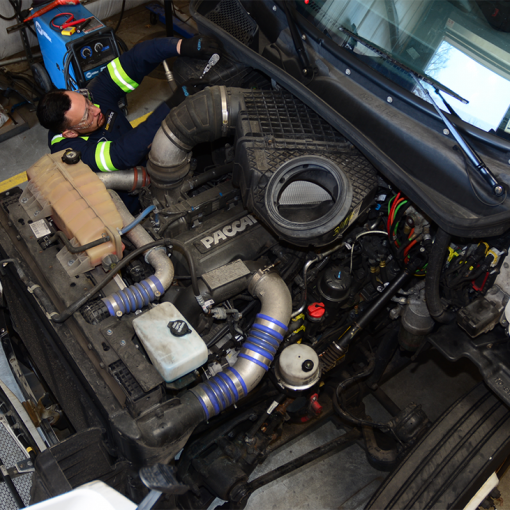Originally appeared in Fleet Owner
A 2023 Federal Motor Carrier Safety Administration report found that nearly 30% of all large truck crashes resulting in fatality or injury are attributed to truck brake problems. In that same study, only 5% of cars show brake problems as a cause of crashes.
That’s not surprising, considering that, according to the U.S. Department of Energy, a Class 8 truck travels more than 50,000 miles per year on average. That’s for regional or local driving; long-haul drivers can put up to 100,000 miles annually on the vehicle.
That’s a lot of wear and tear on every aspect of the truck, with brakes and tires most likely to wear out the fastest. Each year, the Commercial Vehicle Safety Alliance runs Brake Safety Week, during which commercial vehicles are inspected for brake-related violations. The event will be held this year from August 25 to 31. It’s also a time for carriers to educate their drivers and maintenance teams on the importance of brake safety.
Brake Safety Week started in Canada in 1998 and soon after became an annual event in the U.S. as well. In addition to the announced Brake Safety Week, CVSA conducts an unannounced Brake Safety Day, a way to check if fleets are performing the proper maintenance, not just when a safety check is announced but throughout the year.
I was curious as to what improvements were made over time, so I checked the results for both Brake Safety Week and Brake Safety Day on the CVSA website. These inspections occur in the U.S., Canada, and Mexico. The listed results only go back as far as 2016.
2016
- Brake Safety Day: 6,128 inspections resulted in 12.4% out-of-service brake violations
- Brake Safety Week: 18,385 inspections resulted in 13.2% out-of-service brake violations
2017 (two Brake Safety Days; no Brake Safety Week results)
- Brake Safety Day: 7,698 inspections resulted in 14% out-of-service brake violations (September 7, 2017)
- Brake Safety Day: 9,500 inspections resulted in 12% out-of-service brake violations (May 3, 2017)
2018
- Brake Safety Day: 11,531 inspections resulted in 13.8% out-of-service brake violations
- Brake Safety Week: 35,080 inspections resulted in 14.1% out-of-service brake violations
2019
- Brake Safety Day: 10,358 inspections resulted in 16.1% out-of-service brake violations
- Brake Safety Week: 34,320 inspections resulted in 13.6% out-of-service brake violations
2020
- Brake Safety Day: Not listed
- Brake Safety Week: 43,565 inspections resulted in 11.8% out-of-service brake violations
2021
- Brake Safety Day: 10,091 inspections resulted in 12.6% out-of-service brake violations
- Brake Safety Week: 35,764 inspections resulted in 12% out-of-service brake violations
2022
- Brake Safety Day: 9,132 inspections resulted in 14.1% out-of-service brake violations
- Brake Safety Week: 38,117 inspections resulted in 13.3% out-of-service brake violations
2023
- Brake Safety Day: 6,829 inspections resulted in 11.3% out-of-service brake violations
- Brake Safety Week: 18,875 inspections resulted in 12.6% out-of-service brake violations
2024
- Brake Safety Day: 4,898 inspections resulted in 11.6% out-of-service brake violations
- Brake Safety Week: Yet to be determined, so get ready.
What is clear is that the percentage of vehicles put out of service for brake-related violations has remained relatively consistent over the past eight years, fluctuating between 11% and 16%. With the cost of vehicles taken out of service and nuclear verdicts from accidents, among other issues, fleet managers still have work to do regarding their maintenance teams and drivers.
Making predictive maintenance an essential part of your overall maintenance will prove invaluable. Tracking which drivers seem to have issues with worn brakes may mean more driver training is needed.
Whatever the case, you only have a short time to prepare.





